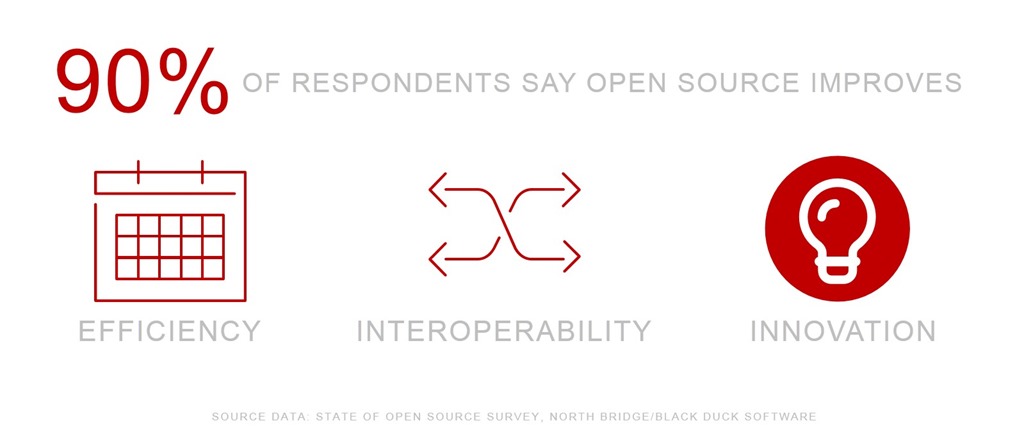오픈소스 스포트라이트: OpenStack LBaaS 향상된 서비스 정의
클라우드의 가장 자주 언급되는 이점 중 하나는(사설 또는 공공, 온프레미스 또는 오프프레미스) 속도입니다. 프로비저닝 속도, 확장 속도, 궁극적으로 기능을 원하거나 요구하는 사용자에게 앱을 제공하는 속도입니다.
그 속도를 얻기 위해 클라우드의 많은 부분이 표준화되었습니다. 표준화는 조립 라인 자동화의 초창기부터 항상 더 빠른 결과를 얻는 데 중요한 열쇠였습니다. 이는 클라우드 환경에서도 마찬가지입니다. Amazon은 API가 Azure, Google 또는 OpenStack과 상호 교환 가능하다는 의미에서 표준화되어 있지는 않지만, 다양한 서비스 전반에 걸쳐 표준화되어 있습니다. 즉, Amazon 인프라에 배포된 모든 애플리케이션은 일상적인 운영 절차에서 많은 부분을 공유합니다.
이는 표준 서비스를 갖춘 표준 배포 방식을 제공하지만 플러그인 아키텍처를 통해 맞춤형 환경을 제공하는 OpenStack에도 해당됩니다. 즉, 특정 요구 사항을 충족하도록 로드 밸런서와 웹 애플리케이션 방화벽, 컴퓨팅을 혼합하여 사용할 수 있습니다.

하지만 OpenStack은 추가 코드 없이 기본 사항을 넘어서 맞춤형 접근 방식을 적용하지 않습니다. 예를 들어, 다른 로드 밸런서를 플러그인할 수 있지만 OpenStack을 통해 제공되는 알고리즘과 기능으로 제한됩니다. 따라서 로드 밸런서에 고급 기능(예: 데이터 경로 프로그래밍 기능(우리 설문 조사에 따르면 적어도 NetOps 담당자에게는 매우 중요한 기능)이나 SSL 종료 또는 별도의 사용자 측 및 서버 측 TCP 프로필 지원)이 있는 경우 OpenStack API를 사용하여 이를 켜거나 끌 수 없습니다. 모든 로드 밸런서에 플러그인할 수 있는 "표준" 기능이 아니기 때문입니다.
공평해요. 하지만 공정하지 못한 점은 앱을 더 빠르고 안전하게 만드는 고급 기능과 OpenStack과 같은 표준화된 클라우드 플랫폼의 이점 중 하나를 선택하도록 강요하는 것입니다.

여기서 오픈 소스가 다시 한번 구출에 나서서 오픈 소스 상태 설문 조사에 참여한 응답자의 90%가 오픈 소스가 개선하는 것 중 하나로 "혁신"을 인용했습니다.
부하 분산 및 안전한 앱 전송을 위해 F5 BIG-IP 에 의존하는 사용자가 OpenStack을 손상시키지 않고도 고급 기능에 액세스할 수 있도록, 우리는 해당 기능을 OpenStack 구현에 원활하게 정의하고 포함할 수 있는 기능을 마련했습니다.
F5 OpenStack LBaaSv2 향상된 서비스 정의(ESD)는 OpenStack 환경에서 F5 BIG-IP에 대한 고급 프로필 프로비저닝을 지정하기 위한 간단한 JSON 기반 메커니즘을 제공합니다. ESD를 사용하면 특정 애플리케이션에 맞게 사용자 정의된 OpenStack 로드 밸런서를 배포할 수 있습니다.
간단히 말해서, ESD는 특정 애플리케이션에 적용하려는 프로필, 정책 또는 iRule을 설명하는 키-값 쌍으로 구성된 표준 JSON 형식의 파일입니다.

예를 들어, 왼쪽의 JSON은 BIG-IP에 "app_dot_net"이라는 가상 서버(애플리케이션)에 " cve-2015-1635 "라는 iRule을 적용하라고 지시합니다.
그게 다예요. 이 간단한 작은 스니펫은 일부 데이터 경로 스크립팅과 약간의 오픈 소스 혁신을 이용하여 실제 CVE로부터 보호되는 앱을 구현할 수 있습니다.
프로필과 정책 역시 적절한 태그를 사용하여 같은 방식으로 적용할 수 있습니다. 자세한 내용은 여기를 참조하세요.
BIG-IP용 F5 OpenStack LBaaSv2 드라이버는 오픈 소스이며 Github에서 사용할 수 있습니다. 원하시면 확장해서 사용하실 수도 있습니다. ESD를 활용할 수 있는 능력은 직접 코드에 접근하여 활용할 수 있는 것과 같은 확장성을 제공합니다.
하지만 오픈 소스이므로 무엇이든 트리거가 걸리고, 더 중요한 것은 앱을 제공한다는 것입니다.
ESD에 대해 자세히 알아보고 여기 github에서 BIG-IP용 F5 OpenStack LBaaSv2 드라이버를 다운로드할 수 있습니다.
